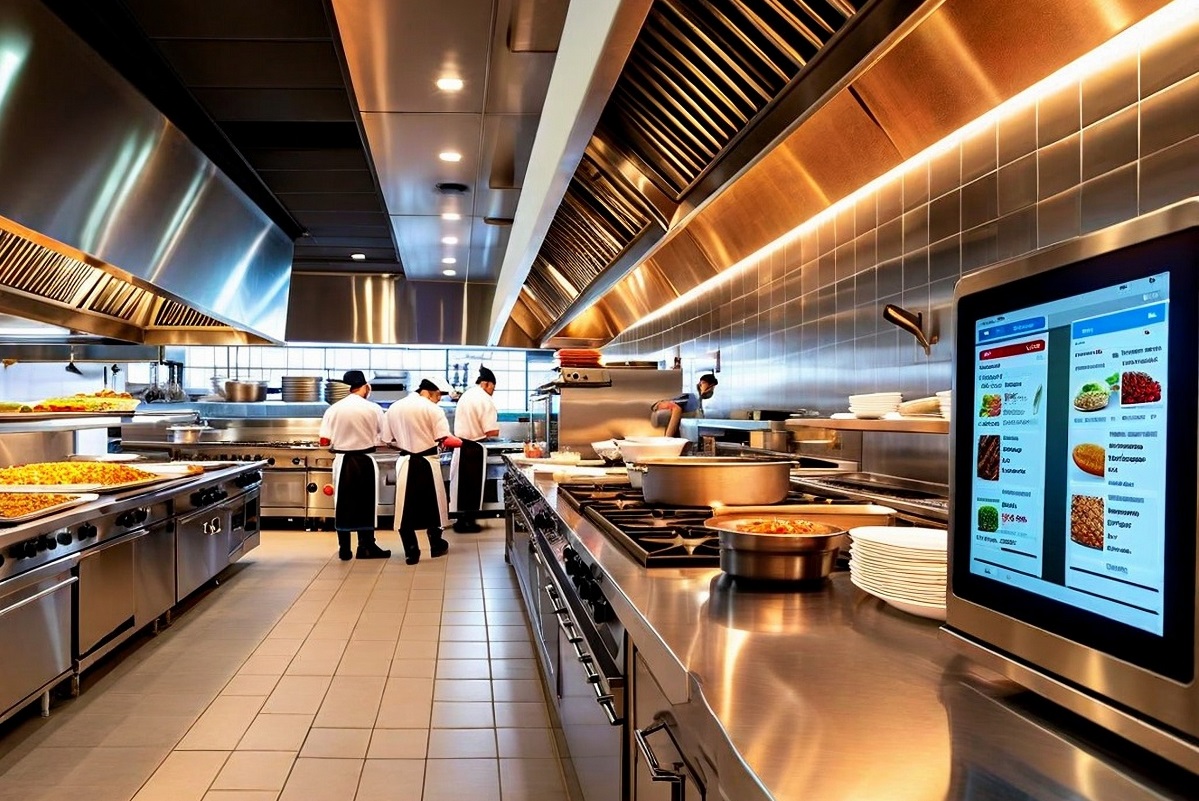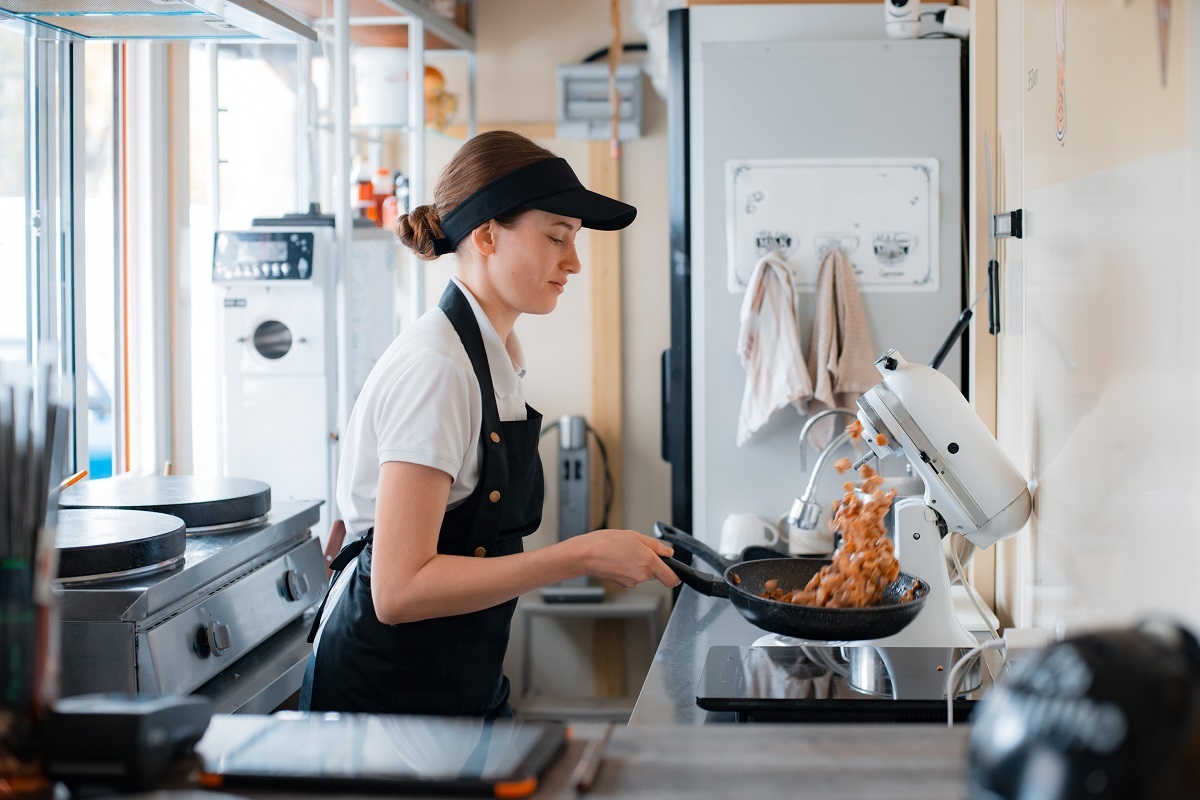Restaurant Technologies, Inc. expects payback on its M2M-based remote monitoring solution in two years or less through reduced truck rolls and new service offerings.
MINNEAPOLIS – January 28, 2013
Machine-to-machine (M2M) communications technology can radically alter service operations by giving service organizations a real-time view of remote equipment and other assets. This allows companies to switch from scheduled maintenance/ inspection processes to as-needed site visits, saving dozens (in some cases, hundreds) of costly truck rolls annually. M2M systems can also provide remote troubleshooting and repair functionality.
But enabling this type of connectivity requires access to a wide-area network — which can be challenging, depending on location and network. Restaurant Technologies Inc. (RTI), which provides sustainable frying oil management services for the food service industry, has solved its remote connectivity issues with cellular-based telemetry that improves asset visibility, reduces truck rolls, and potentially enables new applications and services for its customers.
Minneapolis-based RTI provides complete oil management solutions to more than 45,000+ foodservice locations in 40 metropolitan markets across the U.S. RTI provides services to restaurant chains like KFC, McDonald’s, Applebee’s, and others, including delivery of fresh oil and disposal of waste oil, all equipment and services, and an oil management software platform that helps restaurant managers improve oil usage and efficiency through simple-to-understand data analytics. Anyone who has worked in food service where fryers are involved knows that managing oil is a messy and often dangerous job. In the past, employees had to truck oil around in caddies or carry containers of waste oil outside to dump into disposal vats. With RTI’s automated system, employees use a wand to put oil in and discard it from the fryer. RTI technicians supply fresh oil and collect the used oil via a secure fill box mounted to the exterior of each restaurant — eliminating the need for “grease caddies” and other antiquated oil-handling practices. RTI also provides a full training program, in which the employees and managers of each store receive in-depth coaching on the system from RTI personnel.
The company’s 150 delivery drivers use patented trucks to deliver fresh oil and remove the used cooking oil without ever needed to step inside the restaurant. The company also employs a team of field service technicians who service all of the RTI equipment. The oil tanks at each location are equipped with gauges that will automatically alert RTI when the location requires a delivery. That way, the company can dispatch trucks on an as-needed basis. That information is also fed into the company’s Total Oil Management™ (TOM™) online portal, which lets customers monitor oil related data for single or multiple restaurant locations, including oil usage, filtration practices, and other operational insights.
Until recently, to enable this remote connectivity, RTI had to tie its equipment into its customers’ analog phone lines or digital Internet connections to transmit information. However, using analog phone lines was cumbersome, and digital lines were typically used by the restaurants to transmit credit card authorizations and other data, so getting access to the network could be difficult.
“We wanted to reduce our dependency on the restaurants’ technology to get information out of the restaurants,” says Jason Cocco, vice president of business and product development at RTI. “We were looking for a wireless solution that would allow us to remotely troubleshoot and update telemetry devices, thereby lowering costs in IT, saving us on costly truck rolls, and ultimately driving greater benefits for our customers.”
Remote connectivity would also help RTI gain access to other types of data. “If a restaurant is equipped with smart equipment, for example, we could potentially capture insights on the performance of that equipment for customers or manufacturers,” Cocco says. “We could pull information out of the restaurant or push information to that equipment through this infrastructure.”
Not All Remote Monitoring Is Created Equal
To select a technology solution, Cocco says that RTI evaluated three components of the system: the gateway, which is the hardware that interfaces with the tanks and other equipment; the software that runs the devices (as well as the cloud technology that manages the devices); and the cellular connection. “We looked at those individually, and we looked at packaged solutions from multiple vendors,” Cocco says.
RTI selected a bundled solution from AT&T; CalAmp, which provides the CalAmp On-Line Telemetric platform hardware; and ILS Technology, which provides the deviceWISE machine-to-machine interface platform. “They [ILS] had a lot of experience in the M2M space in many different verticals,” Cocco says. “They’ve worked in the oil and gas industry with tank monitoring, and that type of solution could easily be transitioned to our industry. I felt like they had a good handle on how the technology worked and how it’s evolving. It was important for us to make sure that the solution works today and that it was going to be future proofed.”
Key To Remote Monitoring Success: Develop KPIs
In order to determine if the wireless telemetry system was delivering the benefits the company wanted, Cocco says they planned to measure a number of key performance indicators (KPIs). First was “first-time right” installation of the CalAmp equipment, which would play a key role in RTI’s ability to quickly install the solution for its new and existing customers and maintain service levels. “The way it’s set up, it is very simple for the technicians to install,” Cocco says. “We track how often we get the installation right the first time and how long it takes to install. We also measure how accurate the data is that we’re receiving from the devices and how often we need to make a configuration change.”
In addition to installation costs, RTI also measures service costs for each restaurant. “We can look at the ongoing service costs for the wireless telemetry system and see how that has changed once we’ve upgraded the location,” Cocco says.
Drivers currently carry Motorola MC9094 mobile computers for routing purposes, a solution that has been in place for several years. Data from the telemetry devices on the tanks is sent via the CalAmp gateway to the cloud-based ILS repository, and then to RTI. That information is then pulled into the company’s ORTEC Shortrec routing solution, which builds the routes for delivery trucks and sends that information to the drivers’ mobile computers.
M2M: Worth The Investment
Adding wireless telemetry to its operations created additional expense for RTI, according to Cocco. Because of the additional hardware and software, in addition to the cost of the cellular service, the new M2M system is approximately 15% to 25% more expensive than its wireline predecessor. Cocco says that despite the increased price tag, the system is expected to pay for itself in one to two years through reduced service costs and improved sales of its oil and filtration monitoring services. According to Cocco, using the wireless telemetry solution will reduce the time and effort required to install the remote monitoring equipment and tie into the customer’s network, and reduce sales costs by cutting the time required to engage with the customer’s IT group to capture the appropriate network settings.
Consumable Data Is Crucial
RTI began rolling out its new solution in the summer of 2012. According to Cocco, the primary challenge in initially setting up the system was making sure the information from the tanks and fryers was being correctly read and transmitted. “We had to make sure the connection points to the hardware were right,” Cocco says. “We take measurements from the tank and the fryer, so we had to ensure that the device could differentiate an oil tank versus a filtration reading, and that we had the ports configured correctly. Then, as the data came into the cloud and went back to RTI, we had to make sure it was in a format that we could consume.”
RTI also had to work with AT&T and ILS to determine how often information was transmitted in order to help manage communications costs. The company launched a pilot at five customer locations in the Minneapolis area for approximately two months, then paused the project to analyze the data. “We wanted as much data as possible, and we also wanted to manage the cost of getting that information,” Cocco says. RTI started by checking oil level every hour. “But once we looked at that initial data, we determined we could just take a reading once or twice per day, because the tank levels just weren’t changing that often,” Cocco says. “Filtration data, however, we needed to pull more frequently.”
Installation of the hardware is done overnight at each customer location. “For the first five locations, we had ILS and our engineering folks on site to walk the technicians through how the system worked, step by step, and we could do troubleshooting on site,” Cocco says. For the next 15 customer sites, RTI developed training materials for the service technicians to use when installing the equipment.
Oil tank levels and filtration data are wirelessly transmitted back to RTI systems. Tank-level information feeds the Shortrec routing solution and the Total Oil Management (TOM) website. Shortrec is used to route delivery trucks dynamically. If tank levels fall below a threshold of less than 150 pounds, a delivery is scheduled to the restaurant. Tank levels and filtration readings are also passed into TOM™ and compared to a restaurant’s standard operating procedures (SOPs). Customers use that information to determine if oil use is too high at some locations; if so, they can retrain employees to improve oil use and filtration practices.
Since the wireless M2M system eliminates the need to tie into the customers’ existing analog or digital networks, the new system should make it easier and less costly for RTI to deploy its monitoring equipment at each customer site by reducing the time spent on connecting to the wired network. With that improved connectivity, Cocco also says that it will be easier to remotely troubleshoot equipment, which could reduce service visits. In addition, the new solution is expected to improve inventory and asset management operations for RTI, since the wireless equipment is configured for each individual restaurant.
The system will also give RTI a platform for selling other services. “We want to expand our filtration monitoring,” Cocco says. “We’ve struggled with that in the past because some customers did not have digital networks for us to connect to, or they didn’t allow us to use them. This should open up a market to sell that service to other customers and potentially allow us to tap into other smart equipment in the kitchens.”
Where Remote Monitoring And Field Service Automation Meet
The company hopes to improve field service operations using the telemetry equipment as well. Currently, RTI is rolling out the Astea Alliance field service software running on Motorola MC9094 mobile computers to manage its service operations, and that solution could potentially tie into the wireless telemetry system.
“We really looked at those as separate projects at first, and we’ve just now started thinking about how the M2M and field force automation solutions can work together and the opportunity that could provide,” Cocco says. “We obviously think there can be a connection. If technicians can view real-time information about RTI equipment on the handhelds, they can be more effective at troubleshooting and fixing issues when they enter a restaurant.”
In the first part of 2013, RTI planned to install telemetry equipment in another 15 customer locations, then transition one to two depots completely from the old technology to the new (which would encompass around 500 customer sites). All 40 RTI depots will also be live with the Astea solution by early 2013. RTI is also planning to migrate its mobile computers from the MC9094 to the Motorola MC65.
The Value Of M2M-Based Remote Monitoring
Restaurant Technologies Inc. (RTI) provides sustainable frying oil management services for the food service industry. When RTI wanted to upgrade its ability to remotely monitor fryer oil tank levels at customer sites, the company knew it needed to get away from wireline solutions. Relying on analog connections to the tank monitoring equipment was unreliable, and digital networks could be difficult to access, since they required permission from customers to tap into the network — not always a possibility, given that the company’s restaurant customers used those networks to transmit credit card information.
A self-contained wireless telemetry solution was in order, and RTI deployed a system that combined the ILS Technology deviceWISE M2M (machine-tomachine) communications platform with a cellular gateway from CalAmp. DeviceWISE from ILS Technology securely connects enabled devices (in this case fryer oil gauges at RTI customer sites) to the enterprise to enable real-time information transfer, transaction logging, and bi-directional control. DeviceWISE allows companies with enabled assets to make business decisions based on real-time data, which can streamline business operations and help companies meet compliance standards.
The ILS deviceWISE platform was tightly integrated with the CalAmp cellular gateways and the AT&T network, and its visual logic toolset allows easy integration with RTI’s ORTEC Shortrec routing and scheduling solution. ILS logs data from the tanks via the CalAmp cellular gateway and then forwards it wirelessly to RTI.
Not only does RTI receive real-time updates from the tanks in order to streamline routing and scheduling of its drivers and field techs, the data is also fed into RTI’s customer portal so that restaurant managers can view data on oil use and filtration practices. To learn more about M2M-enabled remote monitoring and deviceWISE, visit www.ilstechnology.com.
RTI – Restaurant Technologies, Inc.
Restaurant Technologies, Inc (RTI) is the leader in smart, safe, sustainable oil and operations management technology for the food service industry. The company’s fully automated oil storage, handling and disposal management system helps increase worker safety, improve restaurant cleanliness and minimize frying oil inconveniences. RTI data management solutions provide restaurant decision-makers with increased visibility into oil usage for better food quality and consistency. Headquartered in Mendota Heights, Minn., RTI serves more than 45,000+ customers via 41 oil depots throughout the U.S. Visit RTI online at www.rti-inc.com.
Field Technologies Magazine
Field Technologies is the premier sourcing site for technologies and the home of Field Technologies Magazine. Field Technologies shows growing organizations how to capture, generate, and retrieve data at all points of work and service as well as educate readers about technologies and applications that drive business performance. To learn more visit Field Technologies Online.





